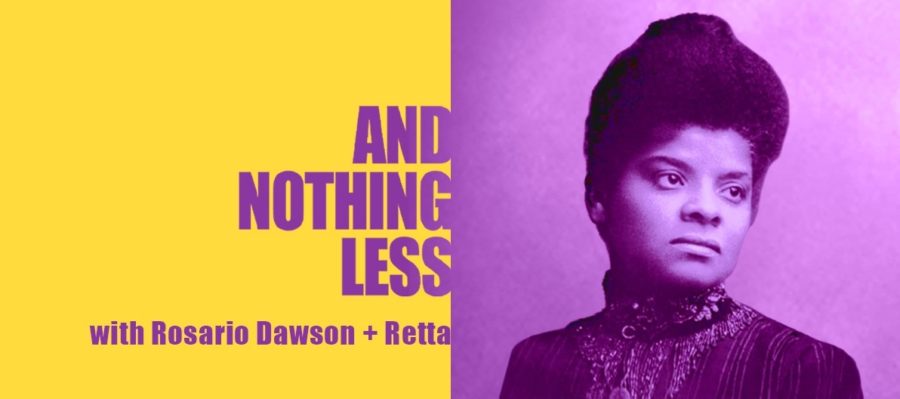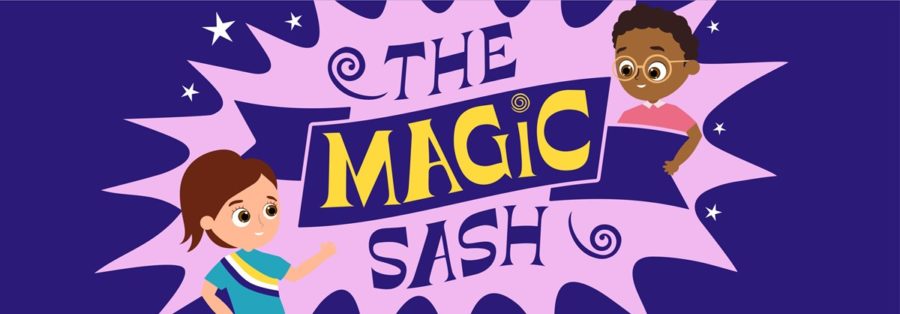
Tuesday, August 18, 2020, marks the 100th anniversary of the passage of the 19th Amendment, guaranteeing and protecting women’s constitutional right to vote. In honor of this momentous celebration, we wanted to share a little history and some resources to help you explore the topic.
We want to recognize that voting rights and women’s suffrage specifically is a complex issue, and we hope this post can serve as a jumping-off point for you to discover more information on the history of suffrage in the United States. With that in mind, we’ll share a few more blog posts in the coming months to dive deeper into some of these topics, so if that’s something you’re interested in, subscribe to our blog and check back soon.
WHAT IS THE 19TH AMENDMENT?
19th Amendment to the United States Constitution reads, “The right of citizens of the United States to vote shall not be denied or abridged by the United States or by any State on account of sex. Congress shall have power to enforce this article by appropriate legislation.”
When this amendment was ratified in 1920, women across America were finally given the right to vote after many decades of organizing, protesting and hard work. The 19th Amendment has a long history in America, which you can read about in full on the National Park Service’s website.
However, the 19th Amendment did not go far enough, as it did not guarantee that all women and men could vote. Women of color specifically were deterred from voting in many states. We will discuss this further in a future post focusing on the 24th Amendment and the Voting Rights Act of 1965.
WOMEN’S RIGHTS NATIONAL HISTORICAL PARK
The National Park Service’s Women’s Rights National Historical Park in Seneca Falls, NY, is an excellent resource for information on the women’s suffrage movement. Our library director visited the park last year and had these thoughts to share:
“You may recall Seneca Falls as the site of the first Women’s Rights Convention in 1848 that featured Elizabeth Cady Stanton, Lucretia Mott and Frederick Douglass. If you find yourself in the area, I recommend visiting. The ranger in charge of the historical park did a fabulous job providing background on the region, the social movements that provided an environment for the convention to occur, the convention itself and the attendees. She really made it come alive—a much better story than what you may have read in a textbook. The ranger weaved a tapestry that was filled with people who were passionate in their beliefs.
The story of how people in Seneca Falls saved the building that served as the site of the convention is a good one too—but you should visit the park to hear that story.”
PODCASTS
The National Park Service produced two podcasts in collaboration with partners to celebrate the Centennial. We highly recommend checking these out.
And Nothing Less: The Untold Stories of Women’s Fight for the Vote
Co-hosted by actresses Rosario Dawson and Retta.
“Men their rights and nothing more; women their rights and nothing less.” — Written by suffragists Susan B. Anthony and Elizabeth Cady Stanton, women’s rights activists used this rallying cry to demand voting equality. But the suffrage movement included far more voices and perspectives than these two well-known names: throughout the fight for women’s right to vote, generations of diverse activists demanded full access to the ballot box. Hosts Rosario Dawson and Retta guide us through this seven-part series from the Women’s Suffrage Centennial Commission and PRX, bringing us the stories we didn’t learn in our history books.
The Magic Sash
Hosted by Olympic gymnast and advocate Aly Raisman.
In this historical fiction adventure for tweens, an 11-year-old girl and boy journey back in time to meet iconic heroes of the movement, including Susan B. Anthony, Frederick Douglass and Harriet Tubman, and experience key moments in women’s suffrage history, such as the first women’s rights convention in Seneca Falls in 1848 and the 1913 Women’s Suffrage Parade in Washington, D.C. The podcast is co-produced by TRAX from PRX—a podcast network for 9 to 13-year-olds—and Peabody Award-winning producers Gen-Z Media.
VIRTUAL EVENTS FROM NPS
Virtual Equality Weekend, Saturday, August 22 & Sunday, August 23
“Join us for Equality Weekend, as we commemorate the 100 years of women’s vote and the centennial of the 19th Amendment!”
READING RECOMMENDATIONS
If you’re interested in learning more about the women’s suffrage movement or the 19th Amendment, here are some books our librarians recommend. If you see something you like, click the title and you’ll be sent to our catalog where you can place a hold.
FOR ADULTS AND TEENS
The Woman’s Hour: The Great Fight to Win the Vote
By Elaine F. Weiss
The Woman’s Hour provides an account of the 1920 ratification of the constitutional amendment that granted voting rights to women and traces the culmination of seven decades of legal battles and cites the pivotal contributions of famous suffragists and political leaders.
The Women’s Suffrage Movement
Edited by Sally Roesch Wagner
Comprising historical texts spanning two centuries with commentary on each period by the editor, this book covers the major issues and figures involved in the women’s suffrage movement with a particular focus on diversity, incorporating race, class and gender.
Amazons, Abolitionists and Activists: A Graphic History of Women’s Fight for Their Rights
by Mikki Kendall
The ongoing struggle for women’s rights has spanned human history, touched nearly every culture on Earth and encompassed a wide range of issues, such as the right to vote, work, get an education, own property, exercise bodily autonomy and beyond. Amazons, Abolitionists and Activists is a fun and fascinating graphic novel-style primer covering the key figures and events that have advanced women’s rights from antiquity to the modern era.
Why They Marched: Untold Stories of the Women Who Fought for the Right to Vote
by Susan Ware
For too long, the history of how American women won the right to vote has been told as the visionary adventures of a few iconic leaders, all white and native-born, who spearheaded a national movement. In this essential reconsideration, Susan Ware uncovers a much broader and more diverse history waiting to be told. Why They Marched is the inspiring story of the dedicated women who carried the banner in communities across the nation, out of the spotlight, protesting, petitioning and demonstrating for the right to become full citizens.
Vanguard: How Black Women Broke Barriers, Won the Vote and Insisted on Equality for All
by Martha S. Jones
In Vanguard, acclaimed historian Martha Jones offers a sweeping history of African American women’s political lives in America, recounting how they fought for, won and used the right to the ballot and how they fought against both racism and sexism. From 1830s Boston to the passage of the Voting Rights Act in 1965 and beyond to Shirley Chisholm, Stacey Abrams and Kamala Harris, Jones excavates the lives and work of black women who, although in many cases suffragists, were never single-issue activists.
FOR KIDS & TWEENS
The Woman’s Hour: Adapted for Young Readers
by Elaine F. Weiss
This adaptation will spark the attention of young readers and teach them about activism, civil rights and the fight for women’s suffrage–just in time for the 100th anniversary of the ratification of the 19th Amendment.
Who Was Ida B. Wells?
by Sarah Fabiny
Born into slavery in 1862, Ida Bell Wells was freed as a result of the Emancipation Proclamation in 1865. Yet she could see just how unjust the world she was living in was. This drove her to become a journalist and activist. Throughout her life, she fought against prejudice and for equality for African Americans. Ida B. Wells would go on to co-own a newspaper, write several books, help cofound the National Association for the Advancement of Colored People (NAACP) and fight for women’s right to vote.
Who Was Susan B. Anthony?
by Pam Pollack
This book profiles the life and accomplishments of the schoolteacher who became the most famous leader of the women’s rights movement.
Lifting as We Climb: Black Women’s Battle for the Ballot Box
by Evette Dionne
For African American women, the fight for the right to vote was only one battle. An eye-opening book that tells the important, overlooked story of black women as a force in the suffrage movement—when fellow suffragists did not accept them as equal partners in the struggle.
Bold & Brave: Ten Heroes Who Won Women the Right to Vote
by Kirsten Gillibrand
Profiles ten women who fought hard to gain the right to vote in the United States, including Elizabeth Cady Stanton, Susan B. Anthony, Sojourner Truth and Inez Milholland.
Around America to Win the Vote: Two Suffragists, a Kitten and 10,000 Miles
by Mara Rockliff; illustrated by Hadley Hooper
Follows suffragettes Nell Richardson and Alice Burke’s cross-country journey to campaign for women’s right to vote.
Miss Paul and the President
By Dean Robbins; illustrated by Nancy Zhang
A picture book introduction to the achievements and legacy of indefatigable suffragette Alice Paul describes how she launched campaigns, organized protests and met with President Woodrow Wilson to secure voting rights for women.
Alice Paul and the Fight for Women’s Rights
by Deborah Kops
Alice Paul reignited the sleepy suffrage moment with dramatic demonstrations and provocative banners. After women won the vote in 1920, Paul wrote the Equal Rights Amendment (ERA), which would make all the laws that discriminated against women unconstitutional. Paul saw another chance to advance women’s rights when the landmark Civil Rights Act of 1964 began moving through Congress. Kops introduces readers to this relatively unknown leader of the women’s movement, and the changing times in which she lived.
Roses and Radicals
by Susan Zimet & Todd Hasak-Lowy
The story of women’s suffrage is as epic, frustrating and as complex as the women who fought for it. Illustrated with portraits, period cartoons, and other images, Roses and Radicals celebrates this captivating yet overlooked piece of American history and the women who made it happen.
Mama Went to Jail for the Vote
by Kathleen Karr.
This picture book describes the final stage of American women’s campaign for the right to vote, from the march in 1913 through picketing the White House in 1917.
For nonfiction accounts of the same events, we recommend Women’s Right to Vote by Elaine Landau or You Wouldn’t Want to be a Suffragist by Fiona MacDonald.


